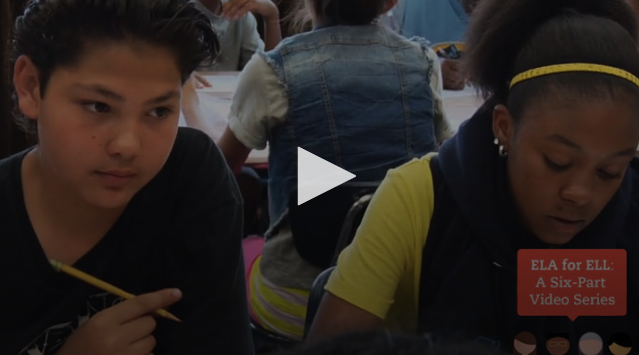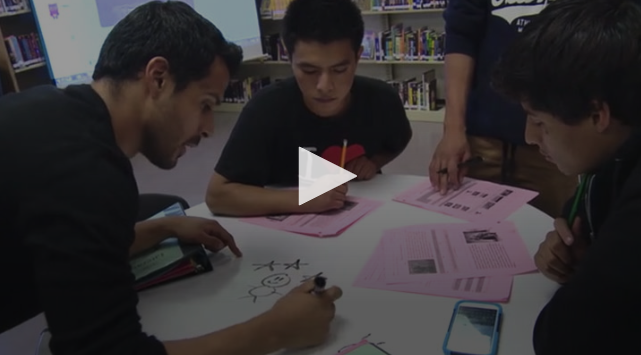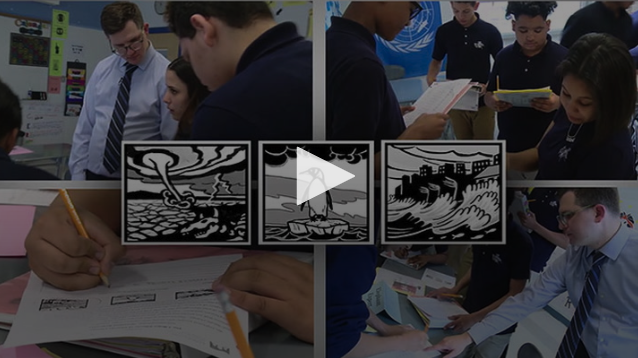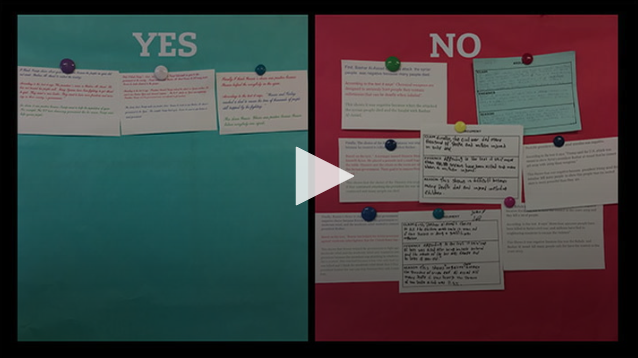The beginning of the year is always a busy time as we welcome many new families to our district. This almost always includes an influx of students who will be attending schools in the United States for the very first time, adjusting to a new culture, and learning a new language. These students will need not only patience from their classroom teachers, but also a particular set of supports in order to find success in their new learning environments. In my last post(Open Link in new tab), I revealed the first five items of my top ten list of things ELL students need from their classroom teachers.
As promised, here are the other five:
Vocabulary Learning Strategies
The average native-speaking student is responsible for learning up to 4,000 new words each year. For ELLs, this number is even greater since they come to school with a smaller English vocabulary than their peers. With so many words to learn, language learners need strategies for meeting this seemingly overwhelming challenge. There are several useful tips you can teach ELLs to help them manage the task of soaking in all the new vocabulary.
VIDEO: Seven Step Vocabulary (Open Link in new tab)
Utilizing Context Clues: Students often don’t realize there are hints right in the text that they can use to figure out the meaning of unfamiliar words. They need to be instructed on how to pick out clues — like synonyms, antonyms, and examples — authors have left in the sentences surrounding the less commonly used words. Though it may seem like second nature for teachers to want to provide definitions for any unknown words their students come across, it’s better to teach them the skill of using context clues to construct their own meaning.
VIDEO: Extending Understanding: Vocabulary Development(Open Link in new tab)
Recognizing Cognates: Encourage students to search for commonalities between the new words they’re learning and words from their native language. The English language is full of cognates or words that are closely related to words from other languages. Show your students how to use their native language as a valuable resource for learning new vocabulary by helping them identify words with similar meanings, spellings, and pronunciations.
Identifying Word Families: Capitalize on the opportunity to streamline vocabulary instruction by teaching students to recognize all of the different forms of the new words they’re learning. For example, if students are studying the word “courage,” you can also call their attention to the words courageous and courageously. Use a graphic organizer like the one below to help students brainstorm and record other forms of their new vocabulary words.

Breaking Apart Words by Roots & Affixes: Many English words are derived from Greek and Latin word parts. Teaching your students the meaning of commonly used prefixes, suffixes, and root words can help them unlock the meaning of new words they encounter in the future. Practice this skill with students when introducing new words to your class by asking them to discuss prefixes, suffixes, and roots used in the word you’re presenting. Then, use the information gathered from the discussion to have students predict the meaning of the new term.
Checks for Understanding
Many students are reluctant to speak up in class and let their teachers know when they’re confused or don’t understand a lesson. Even when their teachers have paused to ask if anyone has any questions, they’ll continue to remain silent, not wanting to draw attention to themselves. Some ELLs may not even be far enough along in their English language development to form the questions to ask their teachers when there’s something they don’t yet grasp. That’s why teachers can’t just assume that students are understanding everything if they aren’t speaking up and asking questions.
In order to truly have an accurate gauge of student learning, teachers must incorporate checks for understanding throughout a lesson so students may demonstrate their level of comprehension. Here are a couple of quick and easy ideas I’ve used with my students to check their understanding during a lesson:
- Vote With Your Feet: The teacher poses a true/false, yes/no, or multiple choice question to the students. The students are then asked to stand up to vote for their answer choice. For example, the teacher may give the following options to her students:
- Stand up if you believe that -3 multiplied by -3 is -9
- Stand up if you believe -3 multiplied by -3 is 9
- Stand up if you believe -3 multiplied by -3 is -6
- Stand up if you believe -3 multiplied by -3 is 0.
Based on the vote, the teacher gets a quick snapshot of who understands the rules of multiplying negative numbers and who needs additional explanation and practice.
- Four Corners: Four Corners gives a slightly different spin on allowing students to vote for an answer to a multiple choice comprehension question. Prior to the beginning of a lesson, the teacher should prominently label the four corners of the classroom A, B, C, D. Then during the lesson, the teacher can ask a variety of multiple choice questions and have the students move to the corner of the room that represents their answer choice. Once in their corner, students can discuss their rationale for selecting that answer with others in their group.
VIDEO: Write-On Tables: Tools for Communication(Open Link in new tab)
- White Boards: A set of classroom whiteboards can also be a handy tool for assessing student comprehension during a lesson. It’s important that the whiteboards are easily accessible to students. They can be strategically placed in the middle of student desk groups, stored underneath desks, or be part of the daily routine of gathering necessary materials at the beginning of class. Throughout the lesson, teachers can ask students short questions to see whether or not they’re grasping the key content concepts being presented. For example, if you’re teaching a lesson on proper nouns, you could ask students to write an example of a proper noun on their whiteboards and hold it up. This allows you to quickly assess student needs.
- Sticky Notes: Sticky notes can also be used as a tool for assessing student comprehension during a lesson and provide students anonymity as well. Used similarly as the whiteboards, teachers can pose short answer questions to students during a lesson and ask them to record their response on a sticky note. The teacher can then designate a spot on the board or butcher block paper for students to post their answers when they’re finished. A quick scan of the student responses can inform the teacher if students are ready to move on or need more instruction and examples.
VIDEO: (Open Link in new tab)Post-Its: Little Notes for Big Discussions(Open Link in new tab)
Time
One of the most important things classroom teachers can provide their English learners to help them be more successful is time. Teachers must be ever mindful that students who are still developing their English language skills need more time to process and interpret both oral and written language. It’s a very complex and often lengthy process for students to take in the English words they’re seeing and hearing, translate them into their native language, generate an answer, and then translate that answer back into English. This means students need extra time when responding orally to a question, reading a text, writing a short answer or essay, etc. Teachers must keep the need for extended time in mind when assessing students, creating deadlines for assignments and projects, and developing protocols for calling on students in class. Always keep in mind that the lower the English proficiency, the more additional time students will need to process the language.
VIDEO: Get Back to Me(Open Link in new tab)
Linguistic Accommodations
As mentioned above, learning a new language is an extremely demanding process that develops gradually over time. English learners require language scaffolds as they’re developing their skills. It’s unreasonable to expect a student who has had very little exposure to English will be able to read, write, speak, and listen at the same level as that of their native speaking peers. It’s our responsibility as educators to provide students the accommodations and supports they need to access the content and demonstrate their knowledge. Here are several linguistic accommodations that have proven to be valuable to ELLs:
VIDEO: Model UN for ELLs: Language & Leadership(Open Link in new tab)
- Sentence Stems: Many times English learners struggle with figuring out how to structure a response. Providing the first couple of words of the sentence can be just the kickstart a student needs to compose a thoughtful reply.
- Paragraph Frames: Paragraph frames are similar to sentence stems. However, instead of providing the first couple of words of a sentence, the teacher provides the first couple of words to each sentence in a paragraph. Paragraph frames are an excellent support for students being asked to write a paragraph or an essay. Take a look at this example(Open Link in new tab) I made for my students who were writing an argumentative essay.
VIDEO: Scaffolding Text Structure for ELLs(Open Link in new tab)
- Word Banks: ELL students often know and understand more words than they’re able to produce on the spot. Providing a list of words for students to reference when writing a response or answering a question can be very helpful for English learners and provide teachers with a better gauge of what students know. In addition, providing a bank of required academic vocabulary words can help improve students’ quality of writing.
- Alternate Texts: Reading at grade level can pose a significant challenge to students who are just beginning to learn to read in English. Finding or creating supplemental readings that align with students’ English proficiency levels is critical in ensuring that they’re able to access the content. There are several free resources on the internet you can use to locate simplified reading passages, such as Newsela(Open Link in new tab), ReadWorks(Open Link in new tab), ReadTheory(Open Link in new tab), and ReWordify(Open Link in new tab).
- Reduce Answer Choices: Since we recognize that reading can be more difficult for our English learners, eliminating an answer choice from multiple choice questions helps lighten the language load for students with limited English proficiency.
- Reword Questions & Answer Choices: The wording used in questions can also be a stumbling block for ELLs. You may need to consider rewording questions and answer choices to replace unfamiliar vocabulary, shorten sentences, and eliminate idioms or unknown contexts.
- Chunk Matching Questions: If the number of answer choices in a matching section is greater than five or six, you should consider chunking your matching sections into smaller segments. If there are too many choices, an English learner may forget the original question while attempting to translate all the possible answers.
- Reduce the Number of Questions: Given that processing the language is very demanding and time consuming for students with limited English proficiency, it may be appropriate to reduce the number of questions a student needs to answer on a test or assignment.
Can-Do Philosophy
The final and most essential factor English learners need from their classroom teachers is a Can-Do Philosophy. Derived from the WIDA English Language Development Standards Framework, the Can-Do Philosophy is the belief that all students come to the classroom with a set of assets and knowledge from their past experiences at school, home, and their communities. It’s an emphasis on students’ capabilities and not letting temporary, limited English proficiency lower the expectations for what they can achieve. ELLs need teachers who subscribe to the Can-Do Philosophy because more than anything, they need adults who believe in them and are confident in their ability to overcome the academic challenges of the classroom.
I hope the ideas I’ve shared will help you feel more prepared in welcoming the new English learners to your classrooms this fall. The ELL students I work with never cease to astound me in all they’re able to achieve and the new ideas they’re able to teach me each day. It’s truly a gift and my great pleasure to work with such an amazing group of students.














